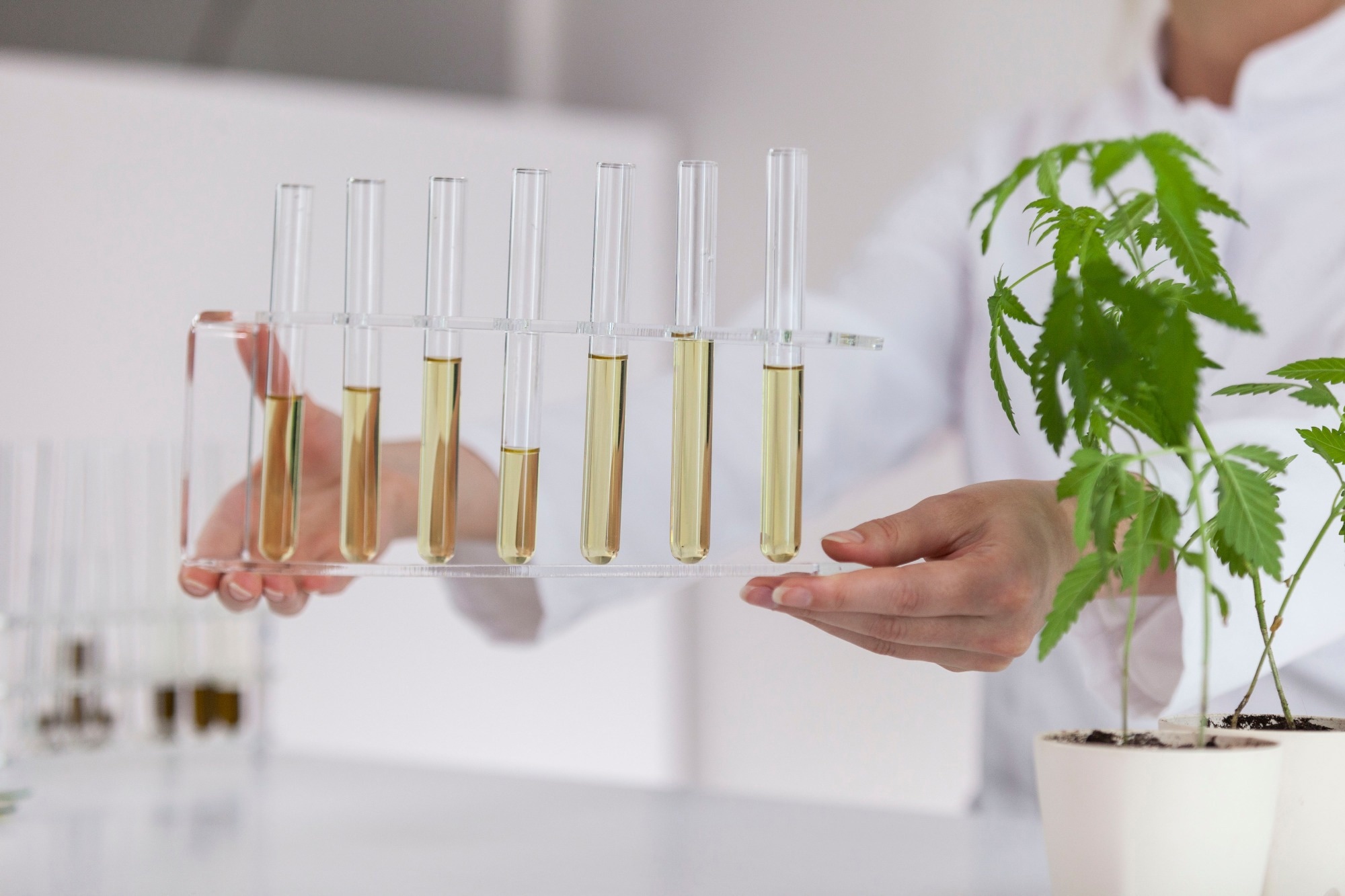In a recent study published in the International Journal of Molecular Sciences, researchers examined the use of an authentomics approach to authenticating cannabis products.
 Study: A Metabolomics and Big Data Approach to Cannabis Authenticity (Authentomics). Image Credit: MexChriss/Shutterstock.com
Study: A Metabolomics and Big Data Approach to Cannabis Authenticity (Authentomics). Image Credit: MexChriss/Shutterstock.com
Background
Considering the increasing availability of cannabis and its derivative products that are often used for recreational and therapeutic use, there is a need to understand and regulate their complex chemistry to ensure safety. Regulators often use targeted analysis to evaluate the bioactive metabolites and any potentially harmful products.
However, cannabis metabolites are incredibly complex, and various approaches are needed to assess them. Therefore, a non-targeted metabolomic analysis of cannabis products may be necessary to generate data to assess their efficacy and safety.
Metabolomics is essential for obtaining insight into the high number of low-molecular-weight metabolites in biological samples. When utilized along with transcriptomics, genomics, and proteomics, metabolomics sheds light on the development and environmental response of biological systems.
The characterization of metabolites as well as metabolic pathways, can be a part of this approach. Targeted and non-targeted techniques can provide information regarding the proportions of known compounds, while the concentrations of unknown compounds can be estimated as relative values.
Authentomics
Authentomic approaches involve combining the non-targeted analysis of new samples with big data comparisons too authenticated old datasets, which provides a robust method to verify the quality of products.
Identification–Conformity–Quantification
It is preferable to develop targeted and untargeted techniques for analyzing known as well as unknown compounds in components. Targeted and non-targeted analyses, the two primary approaches to analysis, will play an essential role in cannabis characterization.
Targeted analyses
When metabolites are known, or biomarker substances can be used to examine the authenticity of food, targeted analyses (TA) are employed. Targeted cannabis and food product analyses are largely comparable. Identifying and measuring the concentration of compounds of interest is required for the assessment of either matrix.
In both instances, the objective is to present accurate data about the product composition. Due to the occurrence of psychoactive compounds with unique properties, the techniques used to analyze compounds of interest present in food products as well as cannabis products may vary.
The latter may need more specialized techniques. Despite these variations, the fundamentals of targeted analysis remain the same, as they provide a comprehensive and accurate description of product composition.
Non-targeted analyses
Food ingredient analysis can yield chemical signatures. The chemical makeup (fingerprint) is a significant indicator of origin, genuineness, quality, and/or adulteration. Variations in fingerprints may indicate alterations in metabolite levels due to factors such as the geographical source of the raw goods, adulteration, production methods, or storage conditions.
A database containing biometric information on known food products is a crucial instrument for determining food authenticity. After the database has been created, the food authenticity can be confirmed by comparing the food’s fingerprint to an authentic food fingerprint in the database.
These chemical fingerprints are generated using a variety of analytical techniques that are chosen based on the product and its characteristics.
Cannabis products consist of several compounds, such as cannabinoids, flavonoids, terpenes, and residual solvents, making their chemical composition frequently more complicated than that of food products. This complexity can make non-targeted cannabis product analysis more difficult than food product analysis.
In addition, the regulations and legal aspects related to cannabis product analysis differ from those associated with food product analysis. Therefore, the methodologies used to analyze cannabis and food products may differ.
Food metabolome database
Several food metabolome databases in the public domain are available for comparative analysis with known as well as unknown metabolites found in foods and food elements. These databases are essential resources for biomarker discovery, metabolomics, clinical chemistry, and education.
The food database contains data related to micronutrients and macronutrients, as well as compounds that account for the flavor, color, texture, and aroma of food. There are over 28,000 reported metabolites in the database.
Information regarding the compound’s nomenclature, food source, chemical class, structure, physicochemical data, and concentration in different foods is provided in the database.
Cannabis metabolome database development, along with the characterization of standard methodologies that approach the level of detail and rigor used in the authentic analysis of food products, is imperative.
Such database development is important to ensure the quality, efficacy, and safety of cannabis products. It is crucial to have analytical methods established that can precisely and reliably evaluate the content of these products.
Utilizing a cannabis metabolome database and standardized methodologies will enable the characterization of the cannabis constituents, which will be essential for consumer confidence and regulatory compliance in the quality and safety of these products.
Conclusion
The study findings demonstrated the usage of authentomics to verify the authenticity of cannabis. This study highlighted the quantitative assessment of commercially available cannabis product constituents using big data analysis and authentomics.
In the process of development, certification mechanisms for cannabis constituents are necessitating the global establishment of an auxiliary system to provide reliable information and verify authenticity.

